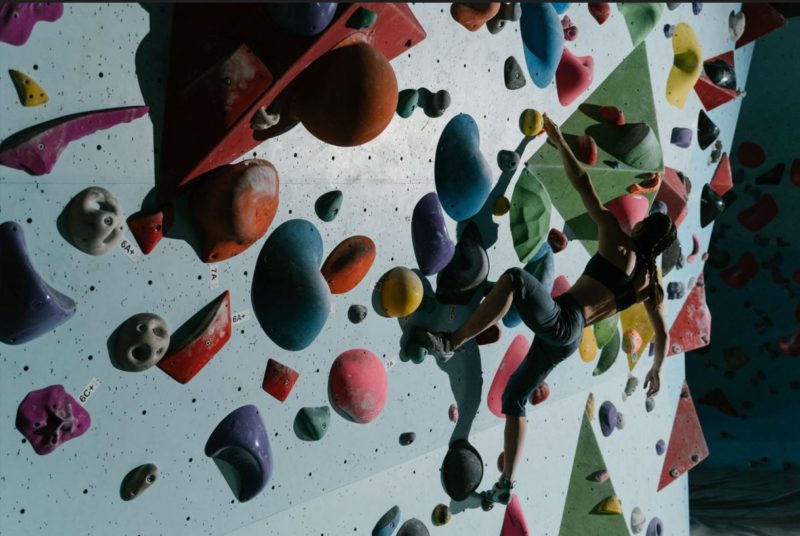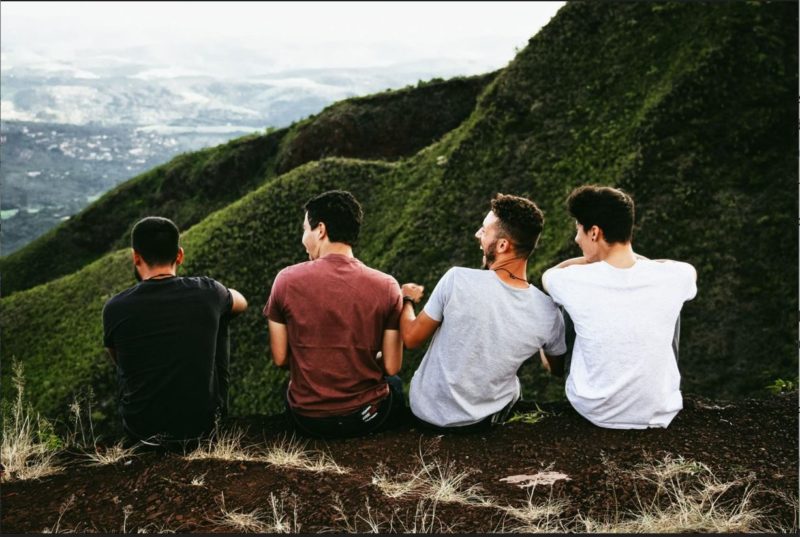When it comes to bouldering, there are a whole lot of factors to think about. From strength to flexibility and technique, these all separate great boulderers from the average joe.

If there’s anything I’ve learned from climbing it’s that the most minor technique improvements or adjustments can make the biggest difference. This can also determine your progression as a beginner boulderer.
Do yourself a favor, and save some time and injuries by following tips from someone who did the trial and error for you.
Planning your Climbing Route
While strength is a component of bouldering, planning your climbing route and moves in advance will get you much further than brute strength. Beginner boulderers often forget this step and suffer once they get to more complicated walls with smaller holds. The aim is to harness your body movements and weight shifting to find the best way to climb using the least amount of strength.
When you look at the wall, analyze it similar to a puzzle or problem-solving question. After all, bouldering is a sport of thought. Think about which moves are the smartest in terms of conserving energy, from a sit-in on your knee to bridging or drop knee on 2 footholds.
Use your legs more than arms to climb
Contrary to popular belief, bouldering is a sport that heavily relies on the legs. Rather than grabbing the climbing holds and pulling yourself up to get to the next point, focus on also looking around at your feet and finding proper footing to rest your toes and lean your body weight on.
Boulderers often use the term “silent feet”, meaning that you should focus on gently placing your legs on holds and finding a good grip there. This technique establishes proper form by forcing beginner climbers to focus both on the next handhold above and on placing their feet in a good way to share the body weight.
Avoid bent arms and keep them straight
You will soon find out that any position where the arms are bent will lead to a faster way to max out the energy and forearm strength, resulting in exhaustion. Try to keep your arms as straight as possible and avoid over-gripping the hand holds (even if you are afraid).
Whenever you reach a safe position where your arms can rest, shake them out. Shaking out your arms will allow the forearm muscles to retract, encourage blood flow, and will enable a recovery period. Not to mention, you won’t overexert and use up all your energy before completing the route.
Choose the right climbing shoes
Pick the climbing shoes that are right for your stage of climbing. Some beginners opt for advanced shoes right away; however, the wrong type of shoes can not only be too painful and aggressive, but it can also discourage you from climbing more and in the process slow you down in your climbing progress.
Pick snug and comfortable shoes that are suited to your climbing level, whether you are a beginner, an intermediate, or an expert climber. Oftentimes, these shoes will ensure that you get the best results.
Additional gear that could help with bouldering are:
- Climbing Chalk
- A brush
- A bouldering pad (for outdoor climbing)
- Climbing Tape for finger injuries
Learn from other boulderers
The climbing community is great in terms of sharing advice and supporting one another. Not only will meeting other boulderers make you some friends and be a good source of encouragement, you’ll also be introduced to different climbing styles and techniques! For example, men and women may boulder quite differently, or a person who is taller or shorter may attempt a route with a different approach.

Sometimes it takes the right person to change your climbing experience for the better. I have some climbing friends whose style completely differs from mine but that’s the beauty of climbing. Someone else’s tips could save you.
It is also important to note that bouldering outdoors is an entirely different monster from bouldering indoors. Taking an experienced boulderer with you when bouldering outdoors will help with tackling changeable conditions.
Some resources for meeting other boulderers are joining clubs, Facebook groups, or meeting others at a local climbing gym.
Safety measures to note while bouldering
Learning the safety measures can prevent both yourself and others from getting injured. Not only can injuries be costly and painful, but injuries can also set your progress back to zero and keep you out of action for months.
Some safety measures include:
- Look down, then jump off: While no one should be below you (unless they’re spotting), looking down to see if all is clear before jumping off is always necessary to avoid falling on someone or something.
- Spotting: When advancing onto more difficult climbs or the tricky start of routes, it’s a great idea to have a spotter. A spotter stretches their hands upwards to help the boulderer into a stable falling position.
- Tactical over-strength: Injuries come from overstraining the body and insufficient warm-up. Most bouldering injuries come from boulderers extending/ pushing themselves too hard and losing control. Do not neglect to warm up before a move.
Pick ideal outdoor bouldering conditions
This tip applies to bouldering outdoors. When starting, it’s best to pick good and favorable weather for bouldering. Essentially, avoid days where a storm or rainfall is expected, to ensure a safer and smoother experience.
Bouldering outdoors consists of you and your fellow boulderers, your portable crash pads, and the environment around you. Sometimes we get used to the feeling of a proper manmade wall and forget that there are unexpected variables outdoors like animals, sharp plants, and rocks.
Focus on your center of balance
Some people refer to this tip as the good old-fashioned saying, “engage the core”. Your body’s tension should be the main focus when climbing.
Sometimes pivoting the hips is all it takes to shift the weight of your body and rely less on the strength of your arms. Equal weight distribution and balance are key.
For long moves that require long reach, you will observe that sometimes pivoting your hips away from the direction you want to reach towards will give you a longer extension.
Practice different climbing techniques on easier routes to figure out which techniques work best for you and your body type.

Floor exercises are also great for building the muscles in your core. Some exercises that could benefit your climbing greatly are push-ups, pull-ups, planks, hanging leg-lifts, and wrist curls.
Patience and Endurance
Bouldering is a sport of patience. Relaxing allows your body to think clearly without burning excess energy. Learn to relax and control your breathing to manage your fear/ tiredness and focus on the route.
Bouldering effectively is extremely difficult, even for experienced climbers. Study the route, calculate your every move, and then tackle the wall. Eagerness and going straight into the wall will most likely wear you down and slow down your progression.
Conclusion
Bouldering is, no doubt, a fun but intensive sport. From unexpected conditions to one’s own fear and emotions, everything is a determining factor in whether you succeed. That’s why with this adventure sport, you’ll experience a bit of humbling but also have a lot of fun while doing it. Don’t worry, you’ll be a better boulderer in no time.

No Comments